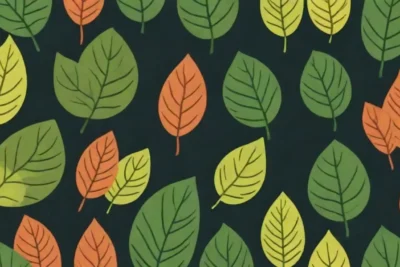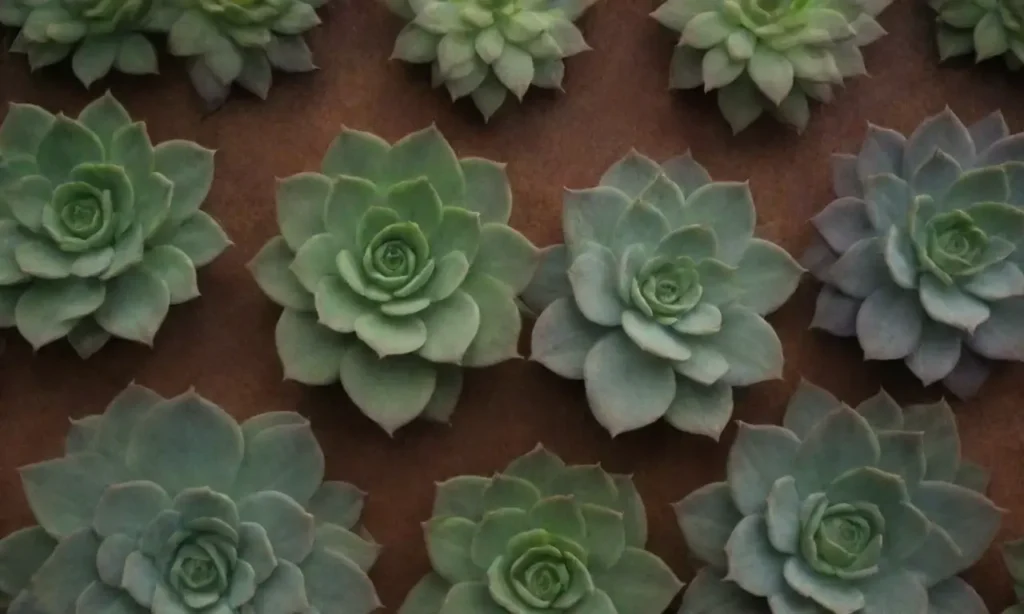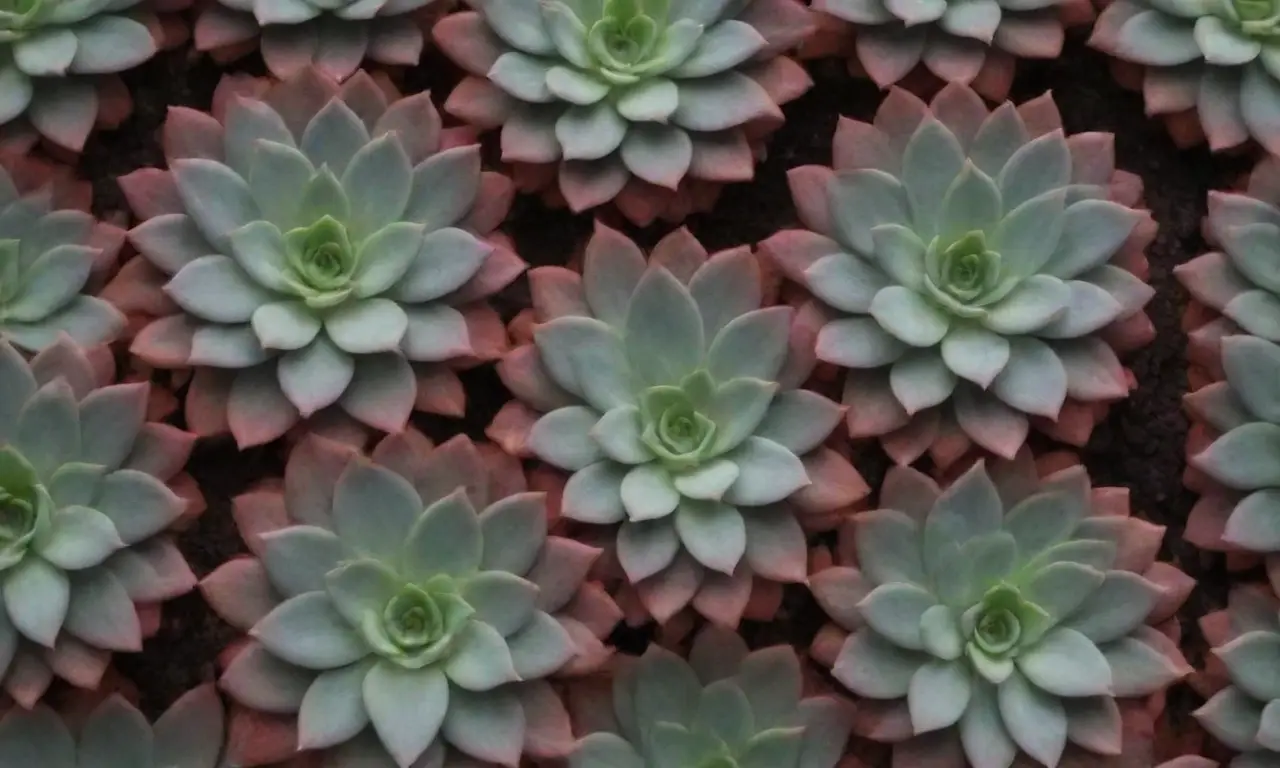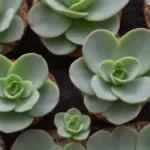
Thick and Thin: Variations in Succulent Leaf Thickness

Introduction
Succulents are known for their diverse range of forms, colors, and adaptations, but one of the most striking features of these fascinating plants is the variation in their leaf thickness. These varying thicknesses not only contribute to the aesthetic appeal of succulents but also play a critical role in their survival strategies in often harsh environments. This article delves into the biology of succulent leaf thickness, explores the fascinating reasons behind this variation, and discusses the ecological implications and care tips for succulent enthusiasts.
The purpose of this article is to provide an in-depth understanding of why succulents exhibit such a wide range in leaf thickness and how this characteristic impacts their growth, resilience, and care. Whether you are a seasoned succulent collector or a novice gardener, gaining a deeper insight into this aspect of succulent biology will enhance your appreciation for these remarkable plants.
Understanding Succulents
Succulents belong to a diverse group of plants that possess specialized adaptations, particularly in their leaves, stems, or roots, enabling them to store water. This water-storage capability is a response to their native arid environments, where water availability can be limited. The thick, fleshy leaves of many succulents act as reservoirs, helping these plants withstand prolonged periods of drought. This adapted physiology results in their characteristic thick leaves that often look plump and vibrant.
On the other hand, certain succulents develop thin leaves, which may seem counterintuitive in an environment where water scarcity is the norm. However, these adaptations often reflect a balance between water retention and the ability to photosynthesize efficiently. For example, a plant with thinner leaves may allow for better gas exchange, a critical process for maintaining photosynthesis. Understanding these adaptations helps us appreciate the ecological strategies that succulents employ to thrive in challenging environments.
Moreover, the variation in leaf thickness among succulents can generally be categorized into two groups—those with thick leaves, which typically belong to genera like Echeveria and Aloe, and those with thin leaves, such as Sedum and some Crassula species. Each genera has evolved its unique strategies that correlate directly with their morphological features. In the following sections, we will explore these differences more comprehensively.
Biological Function of Leaf Thickness
A primary function of leaf thickness in succulents relates directly to water retention. Thick leaves have a high volume of parenchyma, a spongy tissue that can store water and nutrients. This anatomical feature allows these plants to endure long periods without rainfall. Xerophytes, a category that includes many succulents, often possess leaves that are thick and fleshy, acting as a safeguard against dehydration.
The waxy cuticle present on the surfaces of thick leaves also plays an essential role in minimizing water loss. This protective coating reduces transpiration, the process where water vapor is lost from the plant's surfaces into the atmosphere. Consequently, thick-leaved succulents can remain hydrated for prolonged periods, making them well-suited for desert climates where they originate.
 Educational Workshops on the Diversity of Succulent Leaf Shapes
Educational Workshops on the Diversity of Succulent Leaf ShapesConversely, succulents with thin leaves might trade a bit of water retention for improved photosynthesis. Thinner leaves expose more surface area to sunlight, allowing for better light absorption and gas exchange. Some genera have evolved to flourish in conditions where they can access more moisture, such as in regions with seasonal rains. In such cases, the trade-off between water retention and photosynthetic efficiency can lead to enhanced growth and reproductive success during favorable conditions.
Adaptations in Leaf Thickness
Adaptations in leaf thickness are not just passive responses but highly developed strategies shaped by evolutionary pressures. In areas with prolonged periods of drought, succulents tend to evolve thicker leaves to enhance survival. For species native to these regions, the ability to conserve water translates to a reliable source of hydration during dry spells.
Interestingly, the flexibility of leaf thickness also demonstrates how succulents can respond to their microhabitats. For instance, those growing in shady environments may develop a thicker leaf structure to maximize light use and efficiently absorb the limited sunlight filtering through their surroundings. In contrast, directly sunlit succulents may develop thinner leaves with more intense pigmentation to prevent sunburn and facilitate transpiration, balancing hydration and photosynthesis effectively.
These adaptations reveal how each succulent has a unique set of traits that enable it to thrive in its native habitat. Understanding these ecological interactions is critical not just for appreciating the beauty of these plants but also for successfully growing them in home environments. It provides insight into what conditions different species require to thrive and informs best practices for care.
Ecological Relations and Environmental Influences

Leaf thickness in succulents is also influenced by various ecological factors such as soil composition, climate, and competition with other plants. Different soil types can affect water retention as well as nutrient availability, necessitating variations in leaf thickness to adapt to these conditions. For example, in sandy soils where water drains quickly, succulents may favor a thicker leaf to conserve water during dry spells. Conversely, in more nutrient-rich soils that retain moisture, thinner leaves may suffice due to the higher content of available water and nutrients.
Climate impacts leaf thickness as well. For instance, succulents in extremely arid regions like the deserts of Namibia tend to exhibit thicker leaves than those found in subtropical areas with more balanced humidity levels. These adaptations showcase how succulents continuously respond to shifting conditions over time. Furthermore, the presence of other surrounding vegetation impacts leaf thickness as plants often compete for light and resources like water and nutrients, affecting their growth forms.
 Succulents with Heart-Shaped Leaves: Symbolism and Care Tips
Succulents with Heart-Shaped Leaves: Symbolism and Care TipsWhile leaf thickness is often seen as merely an adaptation to environmental conditions, it also reflects the plant's evolutionary history. Succulent plants have adapted traits over millions of years, enabling them to thrive despite extreme fluctuations in conditions. This historical perspective further enriches our understanding of why certain features are more pronounced in specific species compared to others.
Caring for Succulents Based on Leaf Thickness
Understanding how leaf thickness impacts growth and care is essential for anyone interested in cultivating succulents. For instance, succulents with thick leaves typically require less frequent watering, making them perfect for individuals who may forget routine watering tasks. In contrast, varieties with thinner leaves might require more regular moisture to prevent them from wilting or drying out.
Additionally, the thickness of leaves directly affects their susceptibility to pests and diseases. Thicker leaves are generally less attractive to insects like aphids and mealybugs, thanks to their tough texture and waxy cuticle. However, thinner-leaved succulents may need more vigilance as they can be vulnerable to fungal infections, particularly if not watered properly. Therefore, it's crucial for succulent owners to tailor their care practices according to the specific needs of their plants.
Furthermore, the growth conditions—such as light exposure, temperature, and humidity—should be aligned with the plant's natural habitat. Thick-leaved succulents will benefit from bright indirect light, whereas those with thinner leaves may flourish under filtered sunlight. To optimize growth and blooming, succulent aficionados should strive to mimic these conditions as closely as possible, taking note of any signs of stress in their plants as they adapt to new environments.
Conclusion
In conclusion, the variation in succulent leaf thickness is a fascinating aspect of plant biology that reflects their adaptations to survive in often hostile environments. Thicker leaves serve as reservoirs for water retention, while thinner leaves balance between water conservation and efficient photosynthesis. Understanding these variations not only highlights the extraordinary evolutionary history of succulents but also equips growers with practical knowledge for successful cultivation.
As succulent enthusiasts, appreciating the intricate balance of adaptations can lead to greater respect for these plants and their needs. The impact of environmental factors, soil composition, and microhabitats should always be considered when caring for succulents, thereby ensuring they grow robust and vibrant.
Taking the time to explore the diversity and complexity of succulents opens the door to understanding their beauty at a much deeper level. Whether selecting new varieties for a home garden or learning best practices for care, recognizing the crucial role leaf thickness plays will undoubtedly enhance your relationship with these resilient and captivating plants. With the right knowledge and respect for their unique traits, you can cultivate a thriving succulent collection that showcases the beauty of these adaptive wonders from the natural world.
 How Leaf Shapes Influence Pest Resistance in Succulent Plants
How Leaf Shapes Influence Pest Resistance in Succulent PlantsIf you want to read more articles similar to Thick and Thin: Variations in Succulent Leaf Thickness, you can visit the Leaf Shapes category.

You Must Read